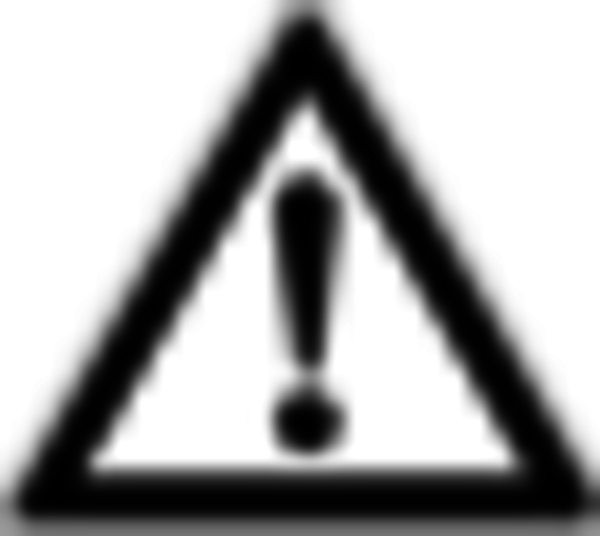Maintenance
Recommendation for maintenance intervals under ideal operating conditions and continuous operation:
First maintenance after 100 operating hours, then every 3000 operating hours/ 4 months.
 Danger during maintenance work with protective equipment removed
Danger during maintenance work with protective equipment removed
Work with due regard for safety and an awareness of hazards if you have to undertake maintenance work with protective equipment removed, e.g. when taking measurements on live parts.
- Disconnect the fan from the mains and secure the mains fuse with a padlock against reconnection.
- Wait until the fan has cooled down sufficiently and the impeller is stationary before removing the weather protection hood or any other protection against accidental contact or touching the fan.
- Lock the impeller so that it cannot move any more. This protects you from unforeseen rotary movements, such as those which may be caused by air flows in the ventilation channel.
- When air is drawn in, frictional/grinding dusts or corrosive air may wear the impeller and cause vibrations. Clean the impeller as previously described. If the impeller is heavily worn, replace it with a genuine spare part.
- Check the minimum spacing between the impeller and impeller housing, the impeller shaft and exhaust opening. Ensure that the impeller is not rubbing and that the impeller housing has not distorted. Changes to spacing or loose screws may make re-alignment necessary.
- Regularly check the motor for abnormal vibrations and noises.
- Check the condition of welds and resistance to oxidation.
Replace oxidised screws and nuts. - Check the condition of the seals. Replace damaged seals.
- Regularly check that the protective devices are fully functional. Should they malfunction or be heavily worn, replace them to ensure smooth operation.
- To prevent the motor from overheating, ensure that the air inlet is not blocked.
- Refit any components you may previously have removed (e.g. protective grille).
- Remove the impeller lock.
- Fit the weather protection hood and tighten the four lock nuts.
- Regularly check the motor for abnormal vibrations and noises.
- Check that guards are fully functional. Ensure that they are working properly.
 Cleaning and maintenance may only be undertaken by qualified personnel and under observation of the enclosed safety instructions.
Cleaning and maintenance may only be undertaken by qualified personnel and under observation of the enclosed safety instructions.